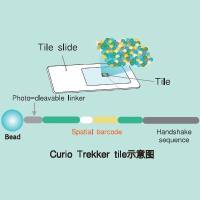In many instances, pulsed-field gel electrophoresis (PFGE) is used to construct a map of a large region from the human or mouse genome. Sometimes, a gene or a gene-complex are very large, as in the case of the Duchenne muscular dystrophy gene (1 ) or the major histocompatibility complex (MHC) (2 ,3 ). Frequently, such a study is initiated because there is evidence that a disease-causing gene is localized in a particular region. Before starting such elaborate molecular techniques as chromosome walking, YAC-cloning (see Chapter 16 ), cutting bands out of PFGEs (Chapter 21 ), and so on, it is important to know the size of the region of interest. In addition, PFGE is used to determine the order of markers more precisely than possible with genetic linkage analysis, and with a PFGE map available, new markers can be quickly localized within that region. Since the construction of a PFGE map is not trivial, this chapter will not so much deal with the techniques to generate the data for mapping, but focus on the construction of a PFGE map and on strategies how to generate data efficiently. Whenever possible, I refer to the relevant chapters in which the techniques are discussed in detail.






